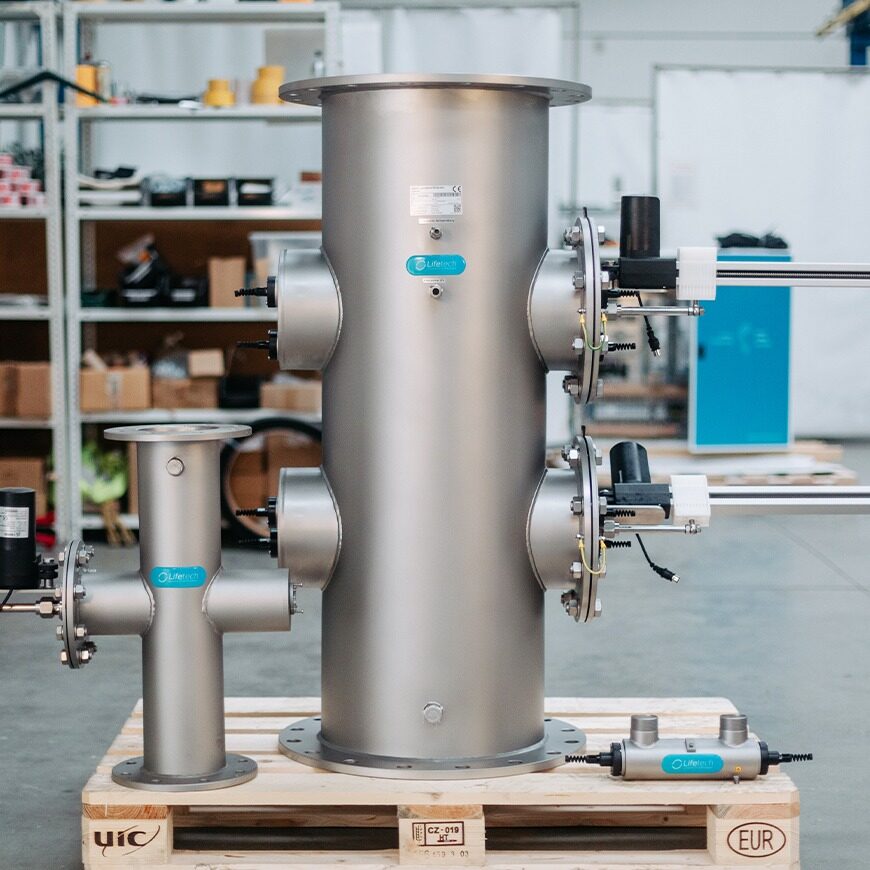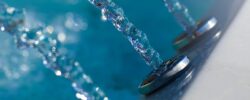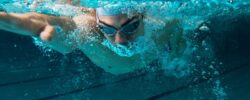LifeOX® M not only removes Trichloramine from pool water, but above all prevents its formation
LifeOX® M not only removes Trichloramine from pool water, but above all prevents its formation
Technological solution for the removal of trichloramine (the most dangerous component of fixed chlorine). Trichloramine released from water causes asthma, burning eyes, corrosion and pool odour.
What is trichloramine?

Trichloramine is not only found in pools with fresh water and classic chlorine disinfection, but also in pools with salt or sea water. Therefore, swimming in pools and relaxing in whirlpools brings with it potential health risks. The most serious health risk is associated with trichloramine, which is formed by the reaction of chlorine with organic substances contained in pool water, mainly going into water with sweat and urine. The resulting trichloramine irritates and disrupts the upper respiratory tract epithelium, causes allergic manifestations in sensitive individuals and a higher susceptibility to asthma in both children and adults. Trichloramine also causes skin irritation and dryness and redness of the eyes or even corrosion and degradation of pool hall structures. It poses an increased health risk during long-term effect, for example, in athletes or water park staff. There are known cases when trichloramine acting over a long period in the air of the indoor pool hall caused the destruction and subsequent collapse of the hall’s reinforced concrete structure. Trichloramine is also responsible for the typical pool odour, and for this reason, you can reliably recognise the presence of trichloramine.
- Asthma
- Eye redness
- Allergies
- Skin irritation and drying
- Chlorine pool smell
- Corrosion

Bathers release various microorganisms and organic substances such as urine, sweat, sebum and mucus secretions, remains of soap, sunscreen and cosmetics and many other substances into the pool water from the mucous membranes, skin and hair. The environment also contaminates the water. The pool water passes through filtration, where impurities of about ten micrometres and more are captured. Minor impurities and dissolved substances pass on. After filtration, the water enters the disinfection stage (low-pressure or medium-pressure UV systems) or the disinfection and oxidation stage (advanced LifeOX® oxidation technology). These processes take place only at the site of technology (TE). For this reason, chlorine must be dosed or electrolytically generated after this stage to ensure disinfection in the pool to reduce the possibility of transmitting infectious germs among pool visitors.
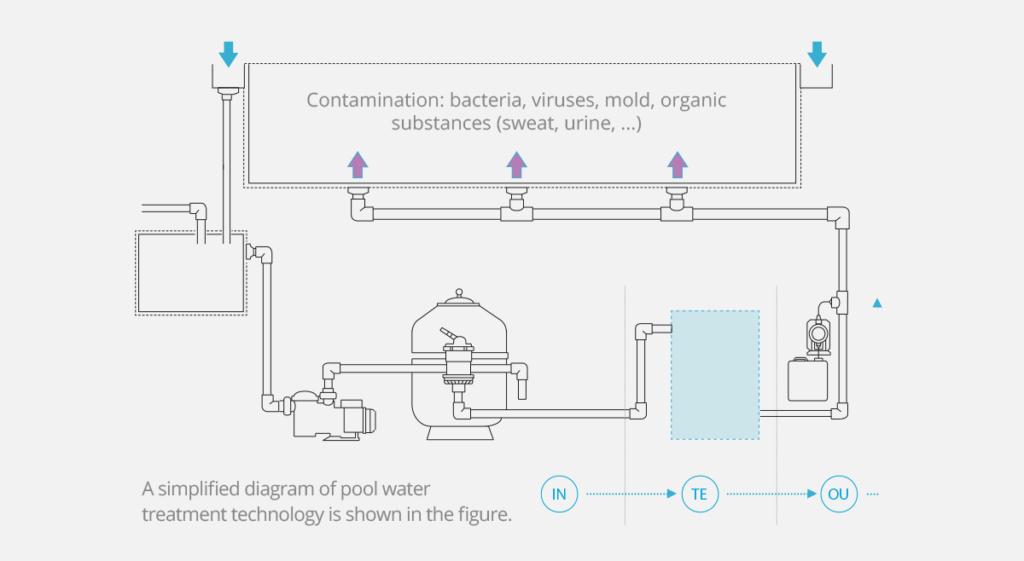
How UV disinfection works?
However, chlorine not only reacts with microorganisms, but also with other substances introduced into the pool water (urine, sweat, etc.) and a wide group of substances is formed, which we call disinfection by-products. The most hazardous by-products include: monochloramine (NH2Cl), dichloramine (NHCl2) and trichloramine (NCl3), collectively referred to as fixed chlorine. Of these, trichloramine (NCl3) is the most hazardous, it is easily released from the water as a gas above the water surface and into the surrounding pool environment. Trichloramine is responsible for the typical pool odour, redness of the eyes, asthma, skin dryness and corrosion of hall equipment. When designing pool water treatment technology, care must be taken to ensure that there is a technological step that removes trichloramine. Therefore, it is no longer possible to use the general term fixed chlorine from a health viewpoint, but a clear distinction must be made between trichloramine and the pair of monochloramine and dichloramine.
Trichloramine removal
It is now popular to use low-pressure UV systems, sometimes referred to as UV-C or UVL systems, in private pools to disinfect pool water, both fresh and salt. Thanks to them, chlorine dose can be reduced in swimming pools. However, low-pressure UV systems do not remove the most harmful substance from water – trichloramine. This situation is shown in the first diagram. The concentration of substances after filtration, during inflow (IN) to the technological stage (TE) has the values shown in the IN column. The treated water does not change the amount of trichloramine and organic substances contained in the water with the passage through low-pressure UV systems (OU – outflow). There will only be a decrease in the concentration of monochloramine and dichloramine. During the subsequent chlorine dosing, the organic substances react with chlorine and the amounts of monochloramine, dichloramine and trichloramine increase.

Medium-pressure UVM systems have become the standard in water treatment technology in public swimming pools. Due to their different UV lamp design, the medium-pressure UVM systems differ from low-pressure UV-C systems in that, in addition to disinfecting water, they also decompose harmful trichloramine. Water disinfection is permanent, i.e., inactivated bacteria cannot be revived, as is possible with low-pressure UV-C systems. For these reasons, the updated German standard DIN 19643 for public swimming pools only allows medium-pressure UVM systems.
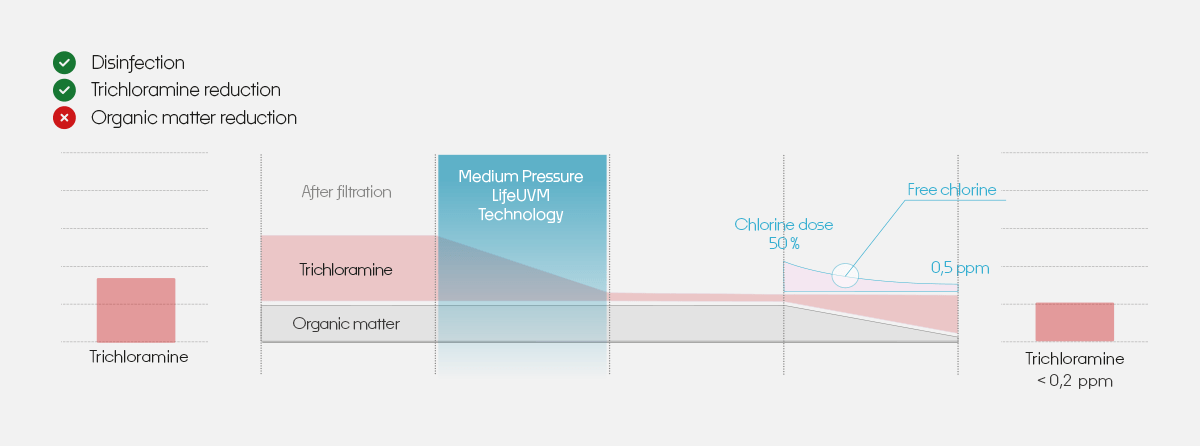
As you can see in Diagram 2, in contrast to the low-pressure UV system, the concentration of trichloramine is reduced by the passage of water through the medium-pressure UV system. There is also a decrease in the concentration of monochloramine and dichloramine. The concentration of organic substances only slightly decreases.

Diagram 3 clearly shows the reason why the advanced LifeOX® oxidation technology is the most effective technology in reducing the concentration of monochloramine, dichloramine and trichloramine in pool water. The LifeOX® technology not only decomposes all these substances efficiently, but also oxidises the organic substances contained in the pool water. Reducing the content of organic substances in water prevents the subsequent formation of chloramines during water chlorination. The LifeOX® M technology for water treatment uses medium-pressure UVM systems and OH-radicals, the oxidation potential and oxidation rate which significantly exceed ozone. That is why the LifeOX® M technology is the most efficient and compact pool water treatment system.
Medium-pressure UVM system
LIFETECH has developed the unique LifeAGE® technology using advanced electronic power supply for medium-pressure UVM lamps. In synergy with our detailed knowledge of UV technology, it ensures the lowest possible operating costs. LIFETECH manufactures medium-pressure UVM systems not only for public swimming pools, but also for private swimming pools. The smallest UVM system, ProfiPure, has a power of only 250 W.

LifeOX®-M
LIFETECH manufactures compact LifeOX®-M units for the following flow rates: 10 m3/h, 20 m3/h, 40 m3/h, 90 m3/h, 140 m3/h and 250 m3/h. The dimensions of the largest LifeOX® M250 unit are only: W 1500 x D 1300x H 1985 mm.
The LifeOX®-M system is modular, suitable for any pool size. Just connect several of these units in parallel and you can adjust any water flow. We recommend adjusting all water flow through the pool. LifeOX® M installation is extremely quick and easy. Simply connect the piping system to the unit’s input and output, and bring the electrical power cable and an external signal to turn the unit on and off.
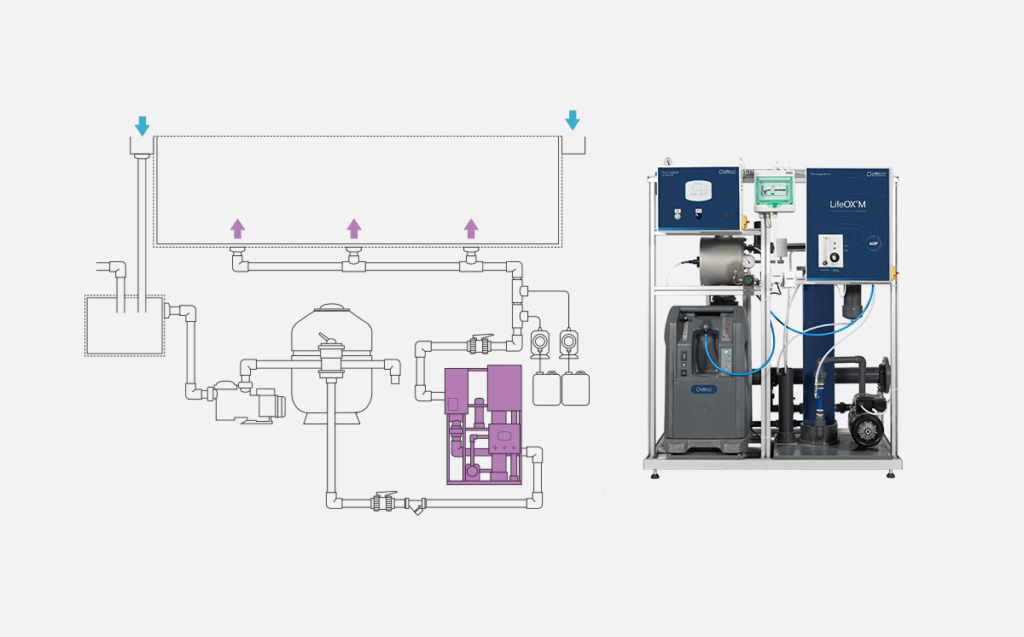
The typical return on investment in the LifeOX® M technology ranges from 8 months to 16 months. This fast return on investment is due to reduced consumption of fresh water and chemicals. The number of visitors to the water park will also increase thanks to the healthy air around the pool.
Part of the treated water is drawn in by a booster pump (3) which increases the water pressure before entering the injector (4). The injector draws ozone gas into the treated water, which was generated in the ozone generator (2) from either dry air or oxygen (1 – air dryer or oxygen concentrator). Ozone dissolves in water. The reaction/degassing tank serves to achieve a better ozone transfer into the water. A small part of the undissolved ozone gas is discharged to the residual ozone destructor, where the ozone is decomposed back into oxygen. Water with dissolved ozone comes out of the reaction/degassing tank and is then mixed with the main water flow. Now all treated water contains dissolved ozone. This ozonised water enters the medium-pressure UVM reactor where OH-radicals are formed in the water as a result of UV irradiation. The oxidation potential of OH-radicals is higher than that of ozone alone and the oxidation processes take place within several milliseconds. Therefore, all water treatment takes place in the UV reactor space.

- Air dryer + Oxygen concentrator
- Ozone generator
- Auxiliary pump
- Injector
- Reaction / Degassing tank
- Degassing valve
- Ozone destroyer in degassing tank
- UV lamp

It might interest you
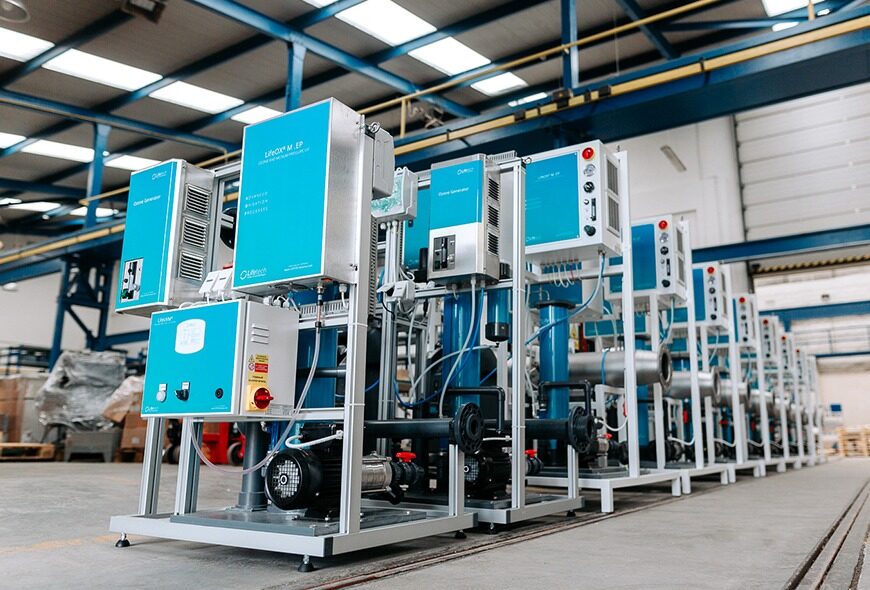
Why is Lifetech’s unique technology LifeOX® M the best available technology for pool treatment
Technology
LifeOX® technology provides the highest possible oxidation potential within AOP
Technology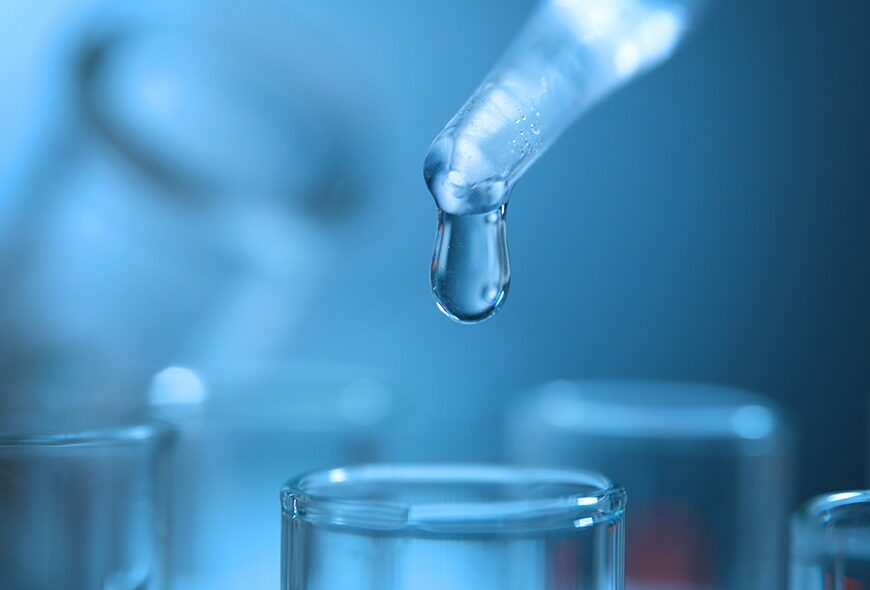
Swimming pools and their health risks: what is not talked about and how to prevent the risks
Healthy pool